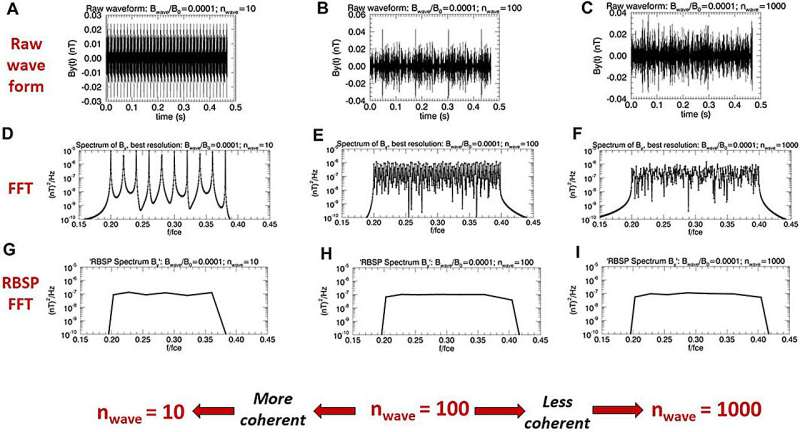This article has been reviewed according to Science X's editorial process and policies. Editors have highlighted the following attributes while ensuring the content's credibility:
fact-checked
trusted source
proofread
Secrets of the Van Allen belt revealed in new study

A challenge to space scientists to better understand our hazardous near-Earth space environment has been set in a new study led by the University of Birmingham.
The research represents the first step towards new theories and methods that will help scientists predict and analyze the behavior of particles in space. It has implications for theoretical research, as well as for practical applications such as space weather forecasting.
The research focused on two bands of energetic particles in near-Earth space, referred to as the Radiation Belts, or the Van Allen Belts. These particles are trapped within the Earth's magnetosphere and can damage electronics on satellites and spacecraft passing through, as well as posing risks to astronauts.
Understanding how these particles behave has been a goal for physicists and engineers for decades. Since the 1960s, researchers have used principles contained within 'quasilinear models' to explain how the charged particles move through space.
In the new study, however, researchers have found evidence that the standard theory might not apply as often as previously assumed. The team of 16 scientists, from institutions in the UK, U.S. and Finland, explored the limits of standard theories. The application of the quasilinear theory can seem straightforward, but in fact integrating it into space physics models in accordance with scientific measurements made in space is a delicate procedure. This paper breaks down the challenges behind this process.
The findings are published in Frontiers in Astronomy and Space Sciences.
Lead author, Dr. Oliver Allanson, from the Space Environment and Radio Engineering (SERENE) Group at the University of Birmingham, said, "Gaining a better understanding of the behavior of these particles is crucial for interpreting satellite data and for understanding the underlying physics of space environments."
Researchers involved in the study are based in the UK at the Universities of Birmingham, Exeter, Northumbria, Warwick, St Andrews, and at the British Antarctic Survey; in the U.S. at the University of California at Los Angeles, University of Iowa and the US Air Force Research Lab, New Mexico; and in Finland at the University of Helsinki.
Next steps for the research will include an enhanced theoretical description based on the findings in this work, which can then be used in space weather models to forecast the behavior of these hazardous particles in near-Earth space.
More information: Oliver Allanson et al, The challenge to understand the zoo of particle transport regimes during resonant wave-particle interactions for given survey-mode wave spectra, Frontiers in Astronomy and Space Sciences (2024). DOI: 10.3389/fspas.2024.1332931
Provided by University of Birmingham


















